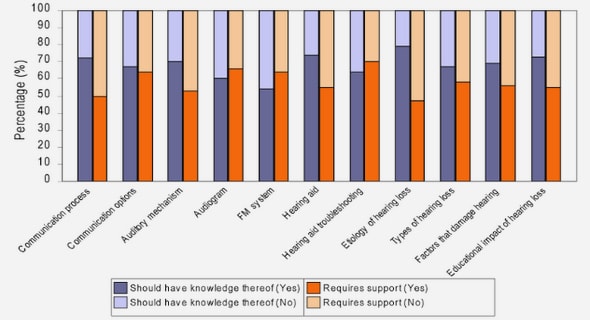(Downloads - 0)
For more info about our services contact : help@bestpfe.com
Table of contents
1 Abstract
2 Literature Review
2.1 Heterokonts are secondary endosymbionts and important model organisms for glycerolipid research
2.1.1 Endosymbiosis
2.1.2 Structure and composition of chloroplast membranes
2.1.3 The model organisms Phaeodactylum tricornutum and Nannochloropsis gaditana
2.2 Photochemistry
2.2.1 Light perception and pigments
2.2.2 Photochemistry
2.3 Photoprotection
2.3.1 The role of the proton gradient for NPQ
2.3.2 Function and regulation of the xanthophyll cycle
2.3.3 Chlorophyll and xanthophyll quenching mechanism
2.3.4 Photoinhibition
2.3.5 State transitions
2.3.6 Light reactions in Heterokonts differ from vascular plants
2.4 Carbon metabolism
2.4.1 Carbon concentration mechanism
2.4.2 Carbon fixation
2.4.3 The role of pyruvate in the production of carbon precursors for glycerolipid synthesis
2.5 Fatty acid synthesis
2.6 Fatty acid trafficking between the chloroplast and the ER
2.6.1 Preparation for the export
2.6.2 Export across the chloroplast limiting membranes to the cytosol
2.6.3 Traffic into the ER and back to the cytosol
2.6.4 Import across the chloroplast limiting membranes into the stroma
2.6.5Interaction of the chloroplast outer envelope membrane with the ER membrane
2.7 Fatty acid elongation and desaturation
2.7.1 Fatty acid elongation
2.7.2 Fatty acid desaturation
2.7.3 Homeoviscous adaptation
2.8 Lipid synthesis
2.8.1 Membrane lipid synthesis
2.8.2 TAG synthesis
2.9 Nitrogen metabolism and NO• signalling
2.9.1 Nitrogen fixation in Heterokonts
2.9.2 Nitric oxide production and possible function in lipid metabolism
3 Lipid and fatty acid profiles in Phaeodactylum tricornutum under different growth regimes
3.1 Introduction and overview
3.2 Determination of culture conditions for comparative studies using P. tricornutum
3.2.1 Long term cultivation of P. tricornutum
3.2.2 Short term cultivation of P. tricornutum
3.3 Membrane glycerolipid remodelling triggered by nitrogen and phosphorus starvation in Phaeodactylum tricornutum
3.3.1 Identification of phosphorous starvation-responsive genes in Phaeodactylum tricornutum by comparative analyses of lipid profiles and transcriptomic data from Thalassiosira pseudonana
3.3.2 Membrane Glycerolipid Remodeling Triggered by Nitrogen and P h os p ho r us Starvation Phaeodactylum tricornutum (published article) ..
3.3.3 Characterization of DGDG synthases in Phaeodactylum
4 Nitric oxide signalling in lipid accumulation
4.1 Introduction and overview
4.2 Small molecule screen
4.3 Oxylipin induced cell death does not trigger TAG accumulation in Phaeodactylum
4.4 NOA-dependent nitric oxide activates the transcription of nitrogen assimilation genes and triggers a glycerolipid remodelling in Phaeodactylum tricornutum (article in preparation)
4.4.1 Supplementary figures
4.5 The NO• production site is important for its signalling function in Phaeodactylum tricornutum neutral lipid metabolism
4.5.1 The location of NO• production is important for the TAG accumulation function
4.5.2 Nitrite triggers NO• but not TAG production in Phaeodactylum
4.5.3 Expression of a putative N. gaditana NOA in P. tricornutum triggers NO• but not TAG production
5 EPA synthesis and trafficking in P. tricornutum and N. gaditana via the elusive “omega pathway”
5.1 Introduction and overview
5.2 EPA biosynthesis
5.2.1 The desaturase equipment of P. tricornutum
5.2.2 Functional analysis of a P. tricornutum Δ-6 elongase in yeast heterologous system
5.2.3 A palmitic acid elongase controls eicosapentaenoic acid and plastid MGDG levels in Nannochloropsis (submitted article)
5.3 The “omega pathway” addressed by reverse genetics of PLDζ, AAS, ATS1 and ATS2 (Preliminary data)
5.3.1 Identification of knock down lines
5.3.2 Characterization of PLDas lines
5.3.3 Characterization of AASas lines
5.3.4 Characterization of ATS1as lines
5.3.5 Characterization of ATS2as lines
5.4 The role of EPA-rich MGDG in homeoviscous adaptation in Nannochloropsis gaditana
5.4.1 Choice of culture conditions
5.4.2 The role of qI in NPQ relaxation in N. gaditana under cold stress conditions
5.4.3 NPQ in the cold-stress response of N. gaditana grown at 10°C
5.4.4 Glycerolipid profiles in N. gaditana cultures grown at 10°C
5.4.5 Glycerolipid profiles in N. gaditana cultures grown at 15°C
6 Discussion and Conclusion
7 Material and methods
7.1 Phaeodactylum and Nannochloropsis strains and culture conditions
7.1.1 Strains
7.1.2 Culture conditions
7.2 Molecular biology
7.2.1 Genomic DNA extraction from microalgae
7.2.2 Generation of constructs for transformation of P. tricornutum and N. gaditana
7.2.3 Relative gene expression quantification by quantitative real time PCR 339
7.3 Cell transformation of Phaeodactylum and Nannochloropsis
7.3.1 Biolistic transformation of Phaeodactylum tricornutum
7.3.2 Electropulse transformation of Nannochloropsis gaditana
7.4 Physiological analyses of microalgae cultures
7.4.1 Determination of cell concentration
7.4.2 Detection of neutral lipids using Nile red staining
7.4.3 Relative chlorophyll fluorescence determination
7.4.4 Chlorophyll a fluorescence spectroscopy at room temperature .
7.4.5 Detection of nitric oxide using 4-amino-5-methylamino-2′,7′- difluororescein diacetate (DAF-FM)
7.5 Imaging
7.5.1 Confocal laser scanning microscopy (CLSM)
7.5.2 Transmission electron microscopy (TEM)
7.6 Lipodomic analyses
7.6.1 Glycerolipid extraction
7.6.2 Gas chromatography-ion flame detection (GC-FID) of fatty acid methyl esters (FAMEs)
7.6.3 Thin layer chromatography (TLC)
7.6.4 Mass Spectrometric (MS) analyses
7.6.5 Yeast transformation and substrate feeding experiments
7.7 Biochemistry
7.7.1 Protein extraction and quantification using Lowry reagent
7.7.2 Sodium dodecyl sulphate polyacrylamide gel electrophoresis (SDSPAGE) and Western Blot analyses
7.7.3 Galactolipid synthase assay
7.8 In silico analyses
7.8.1 Retrieval of Phaeodactylum and Nannochloropsis Gene Sequences
7.8.2 Sequence analyses and phylogenetic reconstruction
7.8.3 Prediction of Subcellular Localization
8 Appendix
8.1 Additional publication
8.2 Additional results
8.2.1 DGD isoforms in Arabidopsis and Phaeodactylum
8.3 Insert sequences
8.3.1 NgNOA (Naga_100007g10)
8.3.2 Codon optimized NgNOA
8.3.3 Condon optimized NgΔ0-ELO1
8.4 Vector sequences
8.4.1 pH4-GUS-AS
8.4.2 UEP-p35S-loxP BSD FL1-FL2 526
8.4.3 pYES
8.5 Codon usage tables
8.5.1 Phaeodactylum tricornutum and Nannochloropsis gaditana
8.5.2 Saccharomyces cerevisae
9 Acknowledgements
10 References



